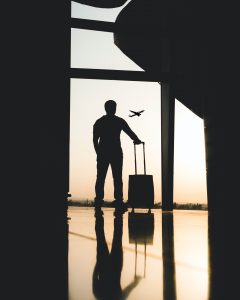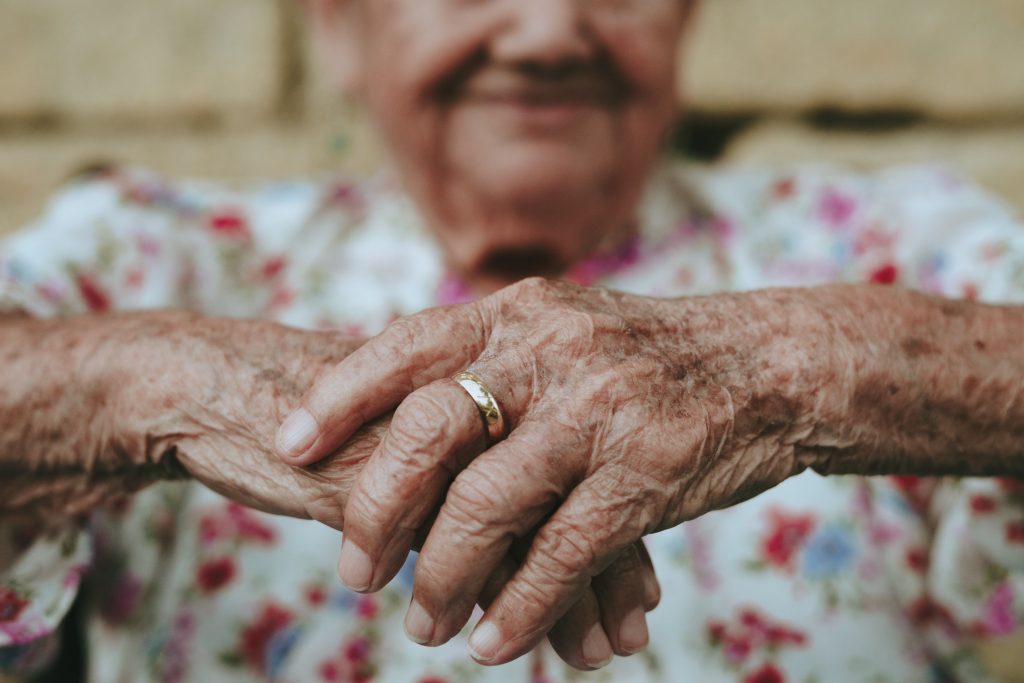9.5 COVID-19 Pandemic – An unprecedented Global Health, Social and Economic Crisis and how it affected so many communities

The COVID-19 pandemic is an unprecedented global health, social and economic crisis. Throughout the pandemic governments around the world have responded with a series of measures to assist. Creating new programs and assistance as the pandemic continues.
As the effects of COVID-19 have been unfolding over the last 3 years, there has been growing attention paid to the intersectionality of COVID-19 and substance use, abuse, mental health, addictions, behaviours and the related harms.
There are many theories, and limited empirical evidence to guide investigations, creating solutions, supporting the many different areas of substance use, mental health and other new as well as existing challenges that create harm.
It has impacted worldwide on people’s livelihoods, health, food systems, medical systems, increased poverty, jobs, social structors, accessibility to necessary everyday items, food security, public health, employment and education.
Activities
- Brainstorm a list of things you did to cope with the isolation from the pandemic.
- Did you increase your substance use?
- How important is social connection in your life?
- Did technology help?
Health Tips World wise
14 October 2021
Message of the WHO (World Health Organization) Regional Director for Africa, Dr Matshidiso Moeti(2)
Global Handwashing Day is celebrated every 15 October, because handwashing is one of the most important ways to prevent disease and save lives.

The theme this year is “Our Future is at Hand – Let’s Move Forward Together” recognizing the global movement promoting handwashing as a key way to prevent COVID-19 transmission, and the need to keep building on this momentum even after the pandemic.
Despite the global attention to hand hygiene, too many people around the world still lack access to soap and water. For example, in African countries only around one in four households have handwashing facilities with soap and water.
As part of the response to COVID-19, countries, partners and communities are investing so that more people can wash their hands frequently. In most countries, authorities have placed handwashing facilities at bus stations, markets and health-care facilities. Zambia has gone a step further, introducing mobile handwashing stations with ramps and levers that can be operated by knees, feet or hands for people living with disabilities.
Homegrown solutions have popped up across Africa. In Ghana, for instance, a taxi driver fitted an automated handwashing machine on his car for passengers to use. In Kenya, nine-year-old Stephen Wamukota invented a hands-free washing facility that uses a foot-operated lever. The challenge now is to scale-up these and other innovations, and this is where public-private partnerships and funding incentives can play a key role.
Through cooperatives or similar institutions, governments could make available small loans to households for indoor plumbing and washbasins. This would help to drive progress towards the global target of hand hygiene access for all by 2030.
In June 2020, UNICEF and WHO launched the Hand Hygiene for All (HH4A) initiative, thanks to which 40 countries, including 22 from Africa, have developed roadmaps towards universal hygiene coverage. Partnerships with the private sector and civil society will be critical in successfully implementing these roadmaps.
So today as we celebrate Global Handwashing Day, I encourage governments, partners and communities to intensify strategies to increase access to safe water and sanitation, as indeed handwashing with water and soap is among the most cost-effective interventions for reducing the transmission of diseases. I urge everyone to remember “each second, save lives – wash your hands” to prevent the spread of COVID-19 and other diseases.
(WHO)- World Health Organization
Travel
Travel is now different than we’ve ever experienced in the past. Whether it is leaving your home and heading out of town, out of Province, out of Canada, there are so many things that now must be taken into consideration that was not something we’ve thought about previously.

COVID-19 has polarized peoples thoughts around travel and safety.
We also need to take into consideration that things can change from when you first looked into the protocols, bought your tickets and went to a destination, that can impact you when you are ready to return home. This may or may not be the same protocols as when you originally departed and can impact you possibly getting stranded at your location, part way home or any number of other possibilities that could create a number of new and unexpected challenges.

So many new things to take into consideration:
- Destination – Domestic or International
- Return or Travel to Canada
- Provincial or Territory requirements
- Vaccination for Travellers
- Testing and Quarantine Requirements
- Boarding flights, trains or cruise ships
- Transportation
- How to travel safely
- Travel Insurance
- New Outbreaks – different variants of the COVID-19 virus
Travel Tips for COVID-19:
Mental Health

COVID-19 is having a negative impact on Canadians’ mental health, where people are seeing their stress levels double since the onset of the pandemic. People are struggling with fear, uncertainty about their health & their loved ones health, social isolation, quarantining, and finances to name a few. Canada has had both federal and provincial governments creating new programs to assist in multiple areas to assist those impacted by COVID-19.
People with SUD (Substance Use Disorder) are at greater risk of worse COVID-19 outcome. There is a surge of behavioural & addictive behaviours (both new and relapse), and mental health currently emerging throughout Canada. Due to COVID-19 accessing the healthcare system has become a larger challenge then ever before for anyone, and this is making those who have addiction or mental health issues more prone to procuring drugs by illegal means. Many surgeries have been put off due to: considered elective, overburdened hospitals, burnout of specialized professionals (EMS, Doctors, Hospital Workers etc), medical staff being used elsewhere as needed. Many health issues have not been addressed due to lack of services at this time such as: diagnosing illnesses, bloodwork, CT scans etc. Some of those surgeries can be critical as well such as cancer treatment or replacement surgeries.
The impact of COVID-19 has left many people with feelings of stress, anxiety and depression who have never experienced it before. For those with preexisting mental health issues symptoms are worsening in this time of uncertainty. Substance abuse and mental health have long been linked, with 50% of people with severe mental disorders being affected by substance abuse. When someone has both mental health issues and a substance abuse disorder, it is called a co-occurring disorder.
More information:
Physical Health

The shift by not just Canadians but worldwide to a more physically distance lifestyle, has assisted in reading the goal of reduction in transmission of COVID-19, but at what cost. It is well known the benefits of being active which assists in lowering health issues such as diabetes, depression, anxiety, dementia, cancer and many other conditions. When COVID Pandemic happened things were forced to change with social distancing, lockdowns, isolation, change of physical activity, or socializing, there has been an unintentional increase in the risk of chronic diseases such as cardiovascular disease, obesity, diabetes and cancer.
It is important to note that physical activities and exercise not only maintain physical and psychological health but also help our body to prevent negative consequences of several diseases such as diabetes, hypertension, cardiovascular diseases, and respiratory diseases.
For some gyms and people they have created online exercise, gyms in their house, walking or running outdoors at off hours with a mask, exercising in their yard, electronic exercise (fitness, boxing, dancing), working out with others to get motivated or many other innovative ways to continue to exercise. The challenge of course for many it is not that simple of an option.
Connect with a friend / friends and create a fitness support groups who can work out together or just connect to discuss ideas and options of what can work out. I know a family who has 1 sibling who lives in Australia, 1 in Edmonton, 1 in Toronto, 1 in Trenton and parents live in Toronto. They do an online fitness together at least once a week including the parents, and yoga as well.
We are only limited by our imaginations.
Examples of impact of COVID on our physical health:
Examples of Easy At-Home Exercise (for adults / seniors / youth / children):
- Yoga
- Meditation
- Sit-Ups. Basic, but effective. …
- Crunches
- Bicycles (whether a exercise cycle or lie on your back feet in the air, knees bent
- Planks. …
- Squats. …
- dancing
- Lunges. …
- Squat Jumps. …
- High Knees
- walking up & down stairs
- working with dumbbells or weights
- finding online exercise that work for you
- electronic games to assist – workouts / dancing / boxing / jumping
Emotional Health

Symptoms of mental health disorders over the course of the COVID-19 pandemic have increased, which is not a surprise. With all the lockdowns, limitations, shut down of stores, communities, churches, schools, gyms and many other facilities it is not a huge surprise that there has been an impact of Canadian & worldwide emotional health.
Many people have been hospitalized for health issues (new & pre-existing), babies, some with extended stays, someone passing away and surgeries to name a few. Many planned surgeries have been postponed as they were considered “elective” and could be postponed for another time. One of the toughest challenges has been that for many, these hospitalizations have been without support as protocols had changed and there were limits put in place for safety reasons. This meant that many have had to do it alone or with a time limit on the 1 visitor. We have all been impacted by the loss of people/family or known people/family that we’ve considered family and due to the COVID Pandemic could not visit or spend time with. These were not always because of having complications due to COVID, but from COVID protocols for safety.
Many of us have seniors in our family who are experiencing a whole new level of isolation, someone who lives alone and can’t connect with others due to transportation limitations, or those with mental health becoming more complicated because of isolation. Some family members we haven’t been able to see in years due to travel restrictions that impacts everyone’s health. We’ve been to many online funerals, weddings, introduction to new family babies, or a small wedding in the park (when allowed) to name just a few.
Education of all levels has been online, and for many that lack of connection has also deeply affected their learning, their emotional health, compromised they’re already complicated challenges that they daily live with. There is a steep learning curve for everyone businesses, individuals, seniors, including families to work with this. There is an assumption that all families can easily do this (1 parent – 3 school age children & the 1 parent has to work at the same time), that there is enough electronics that each child an use one and be supervised, and of course they have access to technology (wifi) to do this successfully.
It is easy to see how Globally everyone’s mental health has been impacted with COVID 19.
“Findings released today from the Survey on COVID-19 and Mental Health (SCMH) indicate that one in four (25%) Canadians aged 18 and older screened positive for symptoms of depression, anxiety or post-traumatic stress disorder (PTSD) in spring 2021, up from one in five (21%) in fall 2020″.
Veterans

Treatment benefits during the COVID-19 pandemic for Veterans.
Since the beginning of COVID-19 measures in early 2020, just like so many other in-person healthcare services, Veterans have been impacted by the COVID-19 pandemic. There have been many temporary changes to the VAC Treatment Benefits program. See link below to get all the information including Answers to many questions.
VAC offices are not open to the public due to the outbreak of coronavirus (COVID-19).
To speak to a mental health professional now, please call the VAC Assistance Service(3):
If you are experiencing an urgent financial need, emergency funding may be available. Call Veterans Affairs Canada – Government of Canada (4)(tel:18665222122).
More Information for Canadian Veterans
Seniors

Seniors (age 65+) have been greatly impacted by COVID in so many different ways. When we look at seniors we need to look at all areas which include: health, social and financial impacts. Depending on where the seniors live with affect these areas differently. Social isolation is such a tough piece of seniors and its not a simple task to get them medical support or vaccinations. Many programs have extended or began new programs to be able to support seniors in different environments.
There was a huge increase in deaths during COVID which statistics stated that “Between the end of March 2020 and mid-May 2021, seniors aged 65 and over accounted for 64% of excess deaths and for 93% of the deaths attributed to COVID-19. Seniors were more likely than younger Canadians to be concerned about their health and to take precautions as a result of the pandemic.”
There has been many changes put in place, but there is still much work that needs to get done, so that seniors are getting the support they deserve and need. The learning curve has been very steep. There are many new programs that have been put in place to support Seniors.
Programs – Created and Adapted for Virtual Accessibility


Many programs have adapted their programs to allow for virtual accessibility, whereas new programs have also been created to meet the new demand. Virtual care or remote monitoring isn’t new in many Healthcare Networks, larger city hospitals or medical practices (like Telehealth), but it has expanded exponentially over the last couple of years during the pandemic. Many have incurred a very steep learning curve.
These include medical, education, physical, recreation, mental health, relaxation, gaming to name a few. They are not meant to replace face-to-face therapy, and it’s not a forum for crisis situations, but it’s an option for those out there who (for whatever reason) don’t have access to emotional supports. This can be due to accessibility, distance, availability, covid restrictions or many other challenges.
These include but not limited to:
- medical appointments (check-in, bloodwork, vaccinations to shut-ins)
- remote care at home (seniors, children, special needs, all ages)
- education (primary, elementary, high school, colleges, and universities)
- education where in-class is mandatory, there have been new programs created to allow the hands-on clinical courses to become virtual (i.e. labs, medical etc) or create new safety protocols to allow a safe in-class environment
- business meetings, trainings
- trainings – youth, adults, seniors
- AA, CA, NA support groups
- Mental Health support groups
- support groups of many kinds
- Treatment Centres (outpatient & virtual)
- Psychiatry
- workouts (Gyms create online classes – specializing in youth, women, seniors etc)
- Fitness Trainers
- Guiding / Scouting / Karate / online board games / painting
- APPS: (meditation, AA, CA, NA supports, support groups, games to relax, mindease (anxiety ease), DARE (anxiety & panic relief), CBT, wisa (anxiety therapy chatbox).
- gaming (individually or online / electronic or boardgames) – families & friends creating online activities for youth, family, friends or groups worldwide or in the same city
- painting, crafting, etc. and how-to sessions (all ages), puzzles, adventures
- online faith based services (for whatever your spiritual beliefs are)
Resources
All Provinces and Territories in Canada created supports for mental health and addiction. Here are some of them:
- Mental Health and Wellness Support during COVID – Yukon
- Government of Nunavut
- Northern Territories – Mental Wellness and Addictions Recovery
- CAMH: Mental Health and the COVID-19 Pandemic
- Mental health and substance use during the Hospital News: COVID-19 Pandemic: Implications for healthcare
- The Addiction and COVID-19 connection
- How thousands of COVID-19 patients have been getting remote care at home
- Resources for Canadian Social workers
References
Figure 9.6.8 – Halsey, D. (2018, November 11). Remembrance Day with Veterans [Photograph].
- Government of Canada, Statistics Canada. (2021b, March 11). COVID-19 in Canada: A One-year Update on Social and Economic Impacts. https://www150.statcan.gc.ca/n1/pub/11-631-x/11-631-x2021001-eng.htm
- World Hand Hygiene Day 2022 | WHO | Regional Office for Africa. (2023, May 8). WHO | Regional Office for Africa. https://www.afro.who.int/regional-director/speeches-messages/world-hand-hygiene-day-2022
- Canada, V. A. (2022, February 28). Talk to a mental health professional – Veterans Affairs Canada. https://www.veterans.gc.ca/eng/contact/talk-to-a-professional
- Canada, V. A. (2023, May 1). Home – Veterans Affairs Canada. https://www.veterans.gc.ca/eng
- Canada, V. A. (2021, November 19). Treatment Benefits during the COVID-19 pandemic – Veterans Affairs Canada. https://www.veterans.gc.ca/eng/help/faq/info-veterans-covid-19/treatment-benefits

